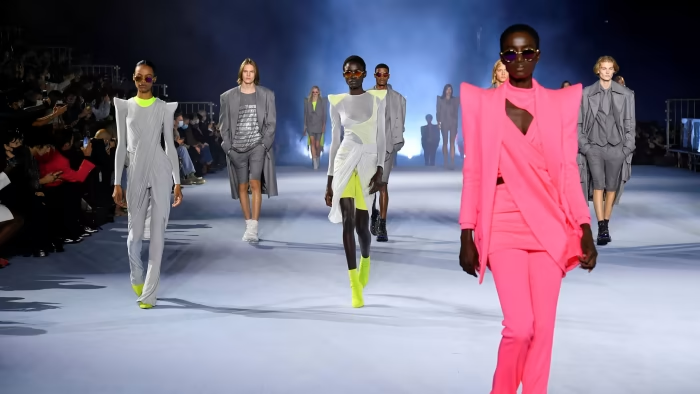From the runway shows to the after-parties, Paris Fashion Week remains a tribute to designers willing to take bold risks.
This summer, Paris hosted the Olympic Games, and while many locals complained and left the city, the world watched as the capital shone in the realms of fashion, music, and sport. Paris Fashion Week, a regular occurrence for its residents, still captures their attention, especially with the influx of vibrant outfits and spontaneous photo shoots that turn the cobblestone streets into a living gallery.
Undeniably, Paris Fashion Week stands as the pinnacle of the global fashion calendar, attracting both major brands and independent designers eager to showcase their work. This season, it’s not just about the length or size of the shows; it’s where groundbreaking ideas begin to form global trends. For example, Chloé’s latest collection under designer Chemena Kamali features ruffled chiffon dresses and caped jackets, igniting a boho-chic revival. Saint Laurent opened the week with an androgynous collection that paid homage to its roots while presenting a fresh take on Anthony Vaccarello’s signature style.
Whispers of change within established fashion houses have sparked conversation among attendees, especially with the anticipation surrounding Sean McGirr’s second collection at Alexander McQueen and Alessandro Michele’s debut for Valentino. However, the exact shifts remain uncertain, adding an air of intrigue to the proceedings.
The landscape of Paris fashion is clearly evolving. Recent years have seen a resurgence of theatrical runway shows, entertaining crossovers, and increased collaborations, with collections often reflecting a whirlwind of ideas rather than singular narratives. Many designers express their struggle to balance artistic vision with the commercial pressures of a slowing luxury market.
Recent appointments, such as Haider Ackermann at Tom Ford and Sarah Burton at Givenchy, bring hope to those who appreciate a designer’s craftsmanship. Paris thrives on innovation, celebrating grand ideas and daring risks, as evidenced by Miu Miu’s booming sales and Alaïa’s must-have accessories.
The Row’s no-photography policy at their show underscores the exclusivity that attendees respect, while many top Japanese designers and emerging talents like Vaquera and Duran Lantink also find their place in this iconic fashion landscape.
This season, practicality prevailed among guests as rain dampened the atmosphere. Trench coats and black boots dominated the scene, with Prada’s buckle-belt bag emerging as a key accessory—thanks to generous gifting to editors. Vintage pop-ups, like those by Shop The Story, attracted attention as stylist Nell Kalonji scored a coveted Ghesquiere-era Balenciaga piece.
Yet, some shows create a unique atmosphere where attendees become part of the spectacle. Rick Owens, for instance, transformed the Palais de Tokyo into a stage for avant-garde fashion, where spectators donned elaborate costumes. This season, Owens invited fashion students to walk the runway, cultivating a sense of community amid the chaos.
At Comme des Garçons and Junya Watanabe, the creative expressions continued to astonish, with guests sporting extraordinary styles that echoed the runway’s boldness.
One standout moment wasn’t a traditional show but rather a celebration of cult designers. Stefano Pilati’s collaboration with Zara debuted with an enchanting party featuring luxurious decor and a star-studded guest list, blending high fashion with accessibility. The next day, at Zara’s flagship store, editors and stylists eagerly snatched up pieces from the collection, showcasing the demand for Pilati’s vision.
As the week unfolds, it’s clear that Paris Fashion Week remains the heartbeat of the fashion world, a place where big ideas and daring designs continue to thrive.

